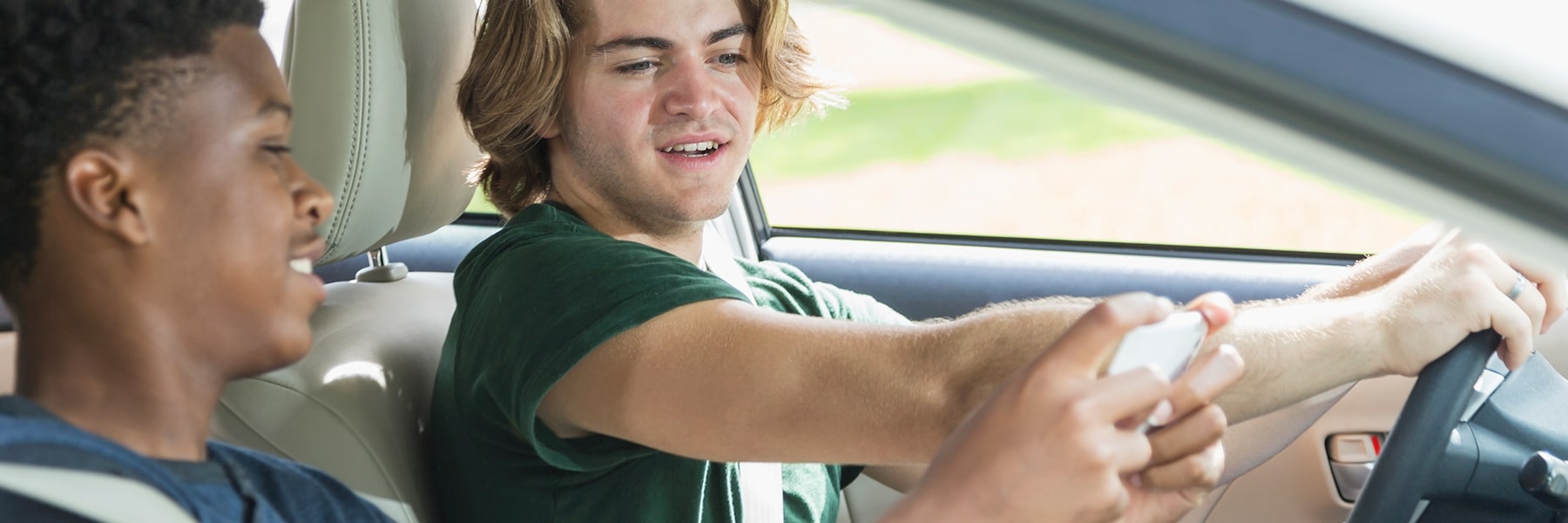Teen Driving Behavior – What Are Parents Most Concerned About?
It’s exciting to see your child grow into an independent teen. Encouraging new skills and celebrating their successful mastery is one of the most satisfying parts of parenthood. However, many parents report that their teens’ new driver’s licenses are a bit too exciting. Kids are thrilled to get on the road, but they don’t understand the risks. As a result, they are overrepresented in car crash statistics. That’s terrifying for parents, who find themselves on edge every time their child hits the road.
 At-Risk: Dangerous Habits Among Teen Drivers
At-Risk: Dangerous Habits Among Teen Drivers
Car crashes are the number one cause of death for those in the 15 – 18 age bracket, making driving more dangerous for this group than any other type of accident, injury, or disease. In some cases, the risk is directly linked to dangerous driving behavior, but often it’s simply a matter of immaturity and inexperience.
These are the biggest concerns for parents of teen drivers:
Distracted Driving
The beauty of mobile devices is that you are always connected with friends and loved ones, but that’s a problem when you’re behind the wheel. Handheld calls and texting are the top contenders when it comes to why teens take their eyes off the road. In 2018, a shocking 2,841 people were killed in vehicle crashes caused by distracted driving – many of them teens.
Keep in mind that mobile devices aren’t the only reason teen drivers get distracted. Having passengers in the car is another top contributor to crashes involving teenage drivers, whether because of distractions or unsafe driving behaviors intended to impress peers.
As a direct result of this data, many states have introduced regulations limiting the number of passengers teen drivers can have, and it’s common for families to enforce rules in this area that are even more strict than state regulations.
Driving Under the Influence
Drinking, drugs, and driving don’t mix – and that’s true at any age. It’s always illegal, and even more so for teens, because teens can’t drink legally under any circumstances. Sadly, despite the laws and awareness campaigns designed to curtail drinking, drugs, and driving, many teen-involved crashes still occur due to alcohol. In 2016, nearly 20 percent of the fatal crashes involving teen drivers were attributed to alcohol-related impairment.
Excessive Speed
Teen drivers are the most frequent offenders when it comes to driving over the speed limit. They regularly drive much faster than the surrounding traffic, which creates risk for everyone in the area. Studies have shown that teen drivers go faster as they gain experience and confidence, which means the highest risk occurs well after those first few months on the road.
In addition to requiring teen drivers to obey speed limits, parents are working to prevent excessive speed when road conditions are less safe. They have detailed discussions and enforce household rules about reducing speed in inclement weather, when roads are unfamiliar, or when there is a lot of vehicle or pedestrian traffic.
Click It or Ticket
Every state (besides New Hampshire) has passed laws requiring the use of seatbelts because they dramatically increase the odds of surviving a crash. Unfortunately, many teen drivers haven’t gotten the message, and neither have their passengers. Teens are least likely to use seat belts as compared to the general population. In 2016, a total of 569 passengers in vehicles driven by teens were killed in crashes, and 58 percent of that group were unrestrained.
Parents know that driving can be dangerous. After all, there are so many things that can go wrong – speeding, distracted driving, bad weather, and driving under the influence are just the beginning. It’s no wonder parents of teenage drivers have many sleepless nights – they just can’t know what their teen driver is doing behind the wheel. Or can they?
New Technology Offers Visibility into Teen Driving Habits
Many parents are turning to advanced technology to monitor teen driving habits when they can’t be present to observe those habits first-hand. The most advanced family safety apps include functionality that encourages teens to reduce risk through safer driving.
These apps take that risk-reduction strategy a step further by giving parents visibility into what goes on behind the wheel when no one is watching. The technology puts parents in control, giving them the information they need to support new drivers and hold them accountable for risky behaviors. Some of the most popular driver safety functionality of these apps include:
- Trip Details: This feature offers insight into where teen drivers have been, along with details like the route they took and their maximum speed along the way. If something goes wrong, the Trip Details screen notes exactly when and where the event occurred.
- Accident Notifications: There is no need to wait up worrying about teens out past their curfews thanks to the accident notification features of driver safety apps. If family members are involved in an accident, the app sends an automated notification with the exact location. That makes it possible for parents to contact emergency services with specific information to get help on the scene as soon as possible.
- Personalized Drive Score: Using data available from smartphone sensors, these apps can track and report on risk factors such as excessive speed, hard braking, use of mobile devices while driving, hard turns, and aggressive acceleration. All of that is compiled to calculate a personal drive score for each user. Parents don’t need to wait for something to happen – they can address poor driving habits right away to prevent future problems.
- Gamification: Some driver safety apps offer gamification to inject a bit of fun into the equation. These features help to inspire friendly competition, which motivates all drivers in the family to drive more safely.
To help mobile carriers integrate this essential driver safety functionality into their family safety apps, Smith Micro added SafePath® Drive to its SafePath Connected Lifestyle Platform. SafePath Drive is a white-label solution that can be customized to match the brand of any mobile carrier. Learn more >>



